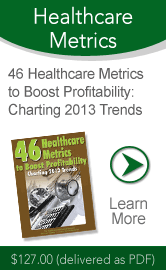 |
 |
Issue #11-1 | April 4, 2013

|
Hospitals caught in crossfire of new OIG anti-fraud effort Physician-owned distributorships (PODs) are now under greater scrutiny than ever—and hospitals face potential liability for improper dealings with these groups. Tough stance: A new, strongly worded fraud alert from the U.S. Department of Health & Human Services, Office of Inspector General (OIG), titled Physician-Owned Entities, reveals the agency’s heightened concern over these entities and the potential for fraud and abuse under the federal anti-kickback statutes. The OIG defines a POD as "any physician-owned entity that derives revenue from selling, or arranging for the sale of, implantable medical devices." PODs have grown in recent years, particularly in the orthopedic and cardiac implant areas. The OIG views the POD business model as one that is highly suspect for fraud and abuse violations. The opportunity for a referring physician to earn a profit, including through an investment in an entity for which he or she generates business, could constitute illegal remuneration under the anti-kickback rules. One of the danger areas is when physician-owners of PODs condition referrals to hospitals or ambulatory surgical centers (ASCs) on the purchase of their devices using coercion or promises of future referrals. Hospitals beware: The OIG points out that the anti-kickback rules apply to both parties of an improper transaction, so both the POD and the hospital could face criminal liability. “In evaluating these arrangements, OIG will consider whether one purpose underlying a hospital’s or an ASC’s decision to purchase devices from a POD is to maintain or secure referrals from the POD’s physician-owners,” the alert states. The alert also points out that patient disclosure of a physician’s financial interest is not a safe harbor that protects both sides from conflict of interest trouble. What to do: If your hospital is doing business with a POD, examine the arrangement in light of this new scrutiny on dealings with these entities. Also, bring your organization’s legal experts in on the review. Pioneer ACO results will be out soonThis summer, the first results of the Pioneer accountable care organization (ACO) initiative will be released. This is a key project in the move by Medicare from a fee-for-service program to value-based purchasing. In a statement to Congress, Richard J. Gilfillan, director of CMS's Center for Medicare and Medicaid Innovation, told the Senate Finance Committee that a number of programs are in the works designed to change the way healthcare is delivered. While the results of many of these programs won’t be available for some time, data from the Pioneer ACO model will be released this summer. The Pioneer ACO model is a program that is testing how different payment arrangements can help providers achieve goals of improving the quality of patient care while reducing Medicare costs. The program was designed to last for three years. For the first two years, a shared savings payment policy is being tested with higher levels of shared savings and risk for program participants than that proposed by the current Medicare program. During the third year, participating ACOs that have shown savings over the first two years will be eligible to move a substantial portion of their payments to a population-based model. Keys to success: For all ACOs, success lies in creating partnership commitments among providers, integrating continuums of care, reducing fragmentation, and eliminating duplication and unnecessary services. Integration of care that crosses continuums from hospital to community is central to the concept. Reimbursement is linked to quality outcomes. On a more granular level, two important elements of success have emerged: IT infrastructure and the engagement of physicians. IT infrastructure is necessary to do complex analysis and get the most value from claims data. Also needed are clinical information systems that can enable providers to do population health management (PHM), a systematic approach to coordinate patient care across a population in order to improve clinical and financial outcomes. The use of electronic patient registries is a key part of care coordination strategy because they generate lists of patient subgroups and information about their health status. These registries can be part of the provider’s electronic health record (EHR) system, obtained from third-party software providers, or designed internally for use with their sophisticated data warehouses. Regardless of the approach, there needs to be integration between inpatient and outpatient clinical and financial information. Probably the most important element is the human factor. Physician engagement can make or break any type of major change such as this because the physicians are on the front line, seeing customers (patients) every single day. Thirty-two provider groups across the country are participating in the Pioneer ACO model, according to a CMS Fact Sheet. ACO Guide: To get an overview of ACOs, Healthcare Intelligence Network’s Essential Guide to Accountable Care Organizations answers key questions so that hospitals, PHOs, IPAs, and other physician organizations, networks, or group practices can assess market position and readiness for the ACO model and move quickly to improve profitability and market share. Knit together EHRs and medical devices to save a bundle Hospitals could save more than $30 billion a year if they had a way to improve the interoperability between medical devices and electronic health record (EHR) systems, according to a new report from the West Health Institute (WHI), a nonprofit medical research organization. The report was released at a series of recent hearings conducted by House Energy and Commerce subcommittees to examine areas of waste in healthcare. Cost barrier: Devices such as defibrillators, electrocardiographs, vital signs monitors, ventilators, and infusion pumps could be interfacing with EHRs, but few hospitals are doing this. One reason, the report points out, is the lack of standardization of interfaces between devices and EHRs. This creates the high cost and complexity that deter many hospitals from investing in this capability. The price of medical device integration, the report states, can range from $6,500 to $10,000 per bed in one-time costs, plus up to 15% of that amount in annual maintenance costs. Why haven’t the medical device makers created standard interfaces? One reason is that they would not see the savings—the rewards would go to the providers. The report notes that the lion’s share (93%) of the financial benefits would accrue to healthcare providers and none to the device vendors. Also, the device companies want to protect their market share, so they aren’t interested in having their products talk to machines from other vendors. In the meantime, hospitals would have to shell out for the interfaces, but this spending could trigger substantial savings on several fronts: increased capacity for treatment as a result of shorter lengths of stay ($18 billion), increased clinician productivity because of less time spent entering device data manually into EHRs ($12 billion), avoidance of redundant testing ($3 billion), and the reduction of adverse events because of "safety interlocks" ($2 billion). Nonprofit hospitals cope despite negative financial outlookThe outlook for U.S. nonprofit hospitals in 2013 continues to be negative, says Moody's Investors Service. Although revenue growth will remain positive, Moody's expects the rate of this growth to diminish. To their credit, hospitals have taken steps to fend off adverse effects on their operations and bottom lines. Effective actions: "Operating margins and leverage metrics have not deteriorated in recent years, despite negative headwinds, because management teams have successfully managed expenses in light of weak patient volumes and less robust revenue growth," Daniel Steingart, a Moody's assistant vice president—analyst and lead author of the report, said in an announcement. Also, hospitals have entered into strategic mergers, affiliations, and other forms of collaboration with various market participants designed to improve operating performance over time. Negative pressures on growth include Federal cuts to medical spending and limited reimbursement increases from insurers. In addition, tepid economic growth and elevated unemployment will dampen demand for healthcare, according to Moody's research. What to do: The challenge going forward will be finding additional ways to trim expenses. Now’s the time to start to look at—or ramp up—efforts to re-engineer processes for long-term savings. Also, interest in possible consolidations will remain on the front burner to trigger economies of scale. |
|
||||||
1000 SW Broadway, Suite 1200, Portland, OR 97205
(503) 291-7963 | editor@bvhealthcarenews.com
www.BVResources.com/healthcare

